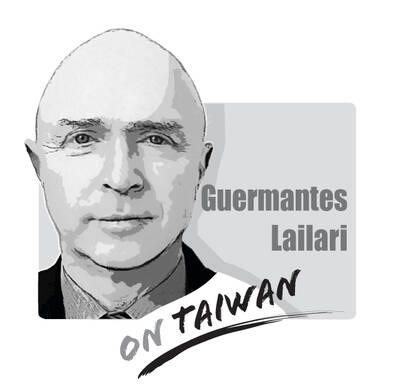When a problem persists long enough, people either consider it unsolvable or become accustomed to it and emotionally numb. Many such problems exist in science and technology development in Taiwan.
The Ministry of Science and Technology on Aug. 2 held a roundtable conference attended by business leaders and academics to discuss the challenges facing the nation’s science and technology development. The conference, hosted by Vice President Chen Chien-jen (陳建仁), was also the start of a series of meetings among government officials, industry representatives and academics in preparation for the 11th National Science and Technology Conference at the end of this year.
Although the participants were important figures, their suggestions for and criticisms of the nation’s scientific research development have failed to impress.
For instance, Minister of Science and Technology Chen Liang-gee (陳良基) said that an industry heavyweight at the conference recommended that industrial development and academic research must implement division of labor. They also suggested that government resources be invested in basic research that the private sector cannot take on and that competent people be put in charge of the work. Other suggestions included government-backed non-profit industrial organizations integrating scientific research and higher education in response to the development of an innovative economy; the government improving its assignment of agencies to oversee non-profit government organizations; and subsidies and funding for technology and personnel.
Unfortunately, not only have these and other suggestions been made at previous conferences, they have also been discussed at many academic seminars. Even though they have been acknowledged for 20 to 30 years, the issues remain unresolved, despite several changes of leadership at the ministry and its predecessor, the National Science Council.
Are they really that difficult? Take the government’s arrangement for jurisdiction over the Industrial Technology Research Institute (ITRI) and the Science Park Administration as examples: It is strange that the ministry has jurisdiction over academic research programs and national laboratories, but not over the ITRI, which focuses on forward-looking industrial technology research and development. At the same time, the Ministry of Economic Affairs, which is in charge of the nation’s industrial development, has no jurisdiction over the Science Park Administration, which deals more with production than research, let alone the major science parks in Hsinchu, Taichung and Tainan.
Sectionalism and resource competition among government agencies have been major barriers to the development of science and technology in Taiwan. As nobody wants to make concessions, the problem drags on and has once again been brought up for discussion.
Over the past 30 years, the nation’s high-tech industry has developed well and made itself a major global hub for electronics, information technology and communications.
However, with increasingly fierce competition from China and other emerging nations, coupled with the rapid development of new technologies, the pressure on the local high-tech industry is rising fast.
As technology innovation and knowledge accumulation are the foundation of the nation’s sustainable development, and the conference is critical to technology investment and policy planning over the next four years, the government should make it a top priority to solve these old problems.

Chinese state-owned companies COSCO Shipping Corporation and China Merchants have a 30 percent stake in Kaohsiung Port’s Kao Ming Container Terminal (Terminal No. 6) and COSCO leases Berths 65 and 66. It is extremely dangerous to allow Chinese companies or state-owned companies to operate critical infrastructure. Deterrence theorists are familiar with the concepts of deterrence “by punishment” and “by denial.” Deterrence by punishment threatens an aggressor with prohibitive costs (like retaliation or sanctions) that outweigh the benefits of their action, while deterrence by denial aims to make an attack so difficult that it becomes pointless. Elbridge Colby, currently serving as the Under
The Ministry of the Interior on Thursday last week said it ordered Internet service providers to block access to Chinese social media platform Xiaohongshu (小紅書, also known as RedNote in English) for a year, citing security risks and more than 1,700 alleged fraud cases on the platform since last year. The order took effect immediately, abruptly affecting more than 3 million users in Taiwan, and sparked discussions among politicians, online influencers and the public. The platform is often described as China’s version of Instagram or Pinterest, combining visual social media with e-commerce, and its users are predominantly young urban women,
Most Hong Kongers ignored the elections for its Legislative Council (LegCo) in 2021 and did so once again on Sunday. Unlike in 2021, moderate democrats who pledged their allegiance to Beijing were absent from the ballots this year. The electoral system overhaul is apparent revenge by Beijing for the democracy movement. On Sunday, the Hong Kong “patriots-only” election of the LegCo had a record-low turnout in the five geographical constituencies, with only 1.3 million people casting their ballots on the only seats that most Hong Kongers are eligible to vote for. Blank and invalid votes were up 50 percent from the previous
Alarm bells over a “hollowing out” of Taiwan’s semiconductor industry and US demands for “protection money” have fueled a panic over Taiwan. To understand how misplaced these fears are, consider the movements of global technology giants. Nvidia Corp CEO Jensen Huang (黃仁勳), Advanced Micro Devices Inc (AMD) CEO Lisa Su (蘇姿丰) and Taiwan Semiconductor Manufacturing Co (TSMC) chairman C.C. Wei (魏哲家) could undoubtedly understand the situation best, and they continue to make key investments in Taiwan. They do not make decisions on a whim. They are the architects of global computing power strategy and possess the highest levels of industry knowledge. No